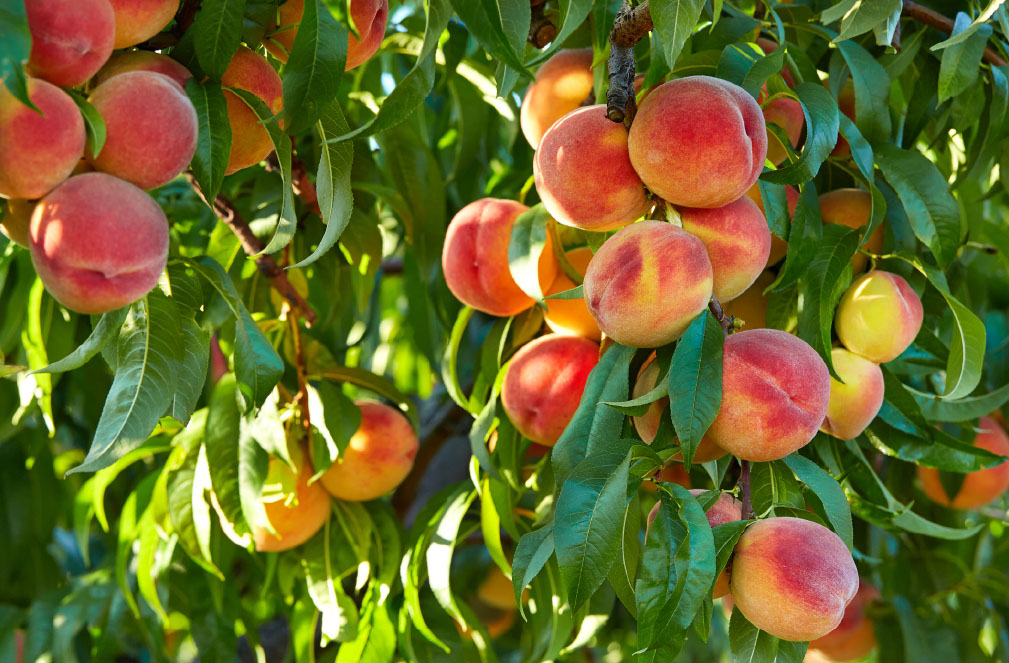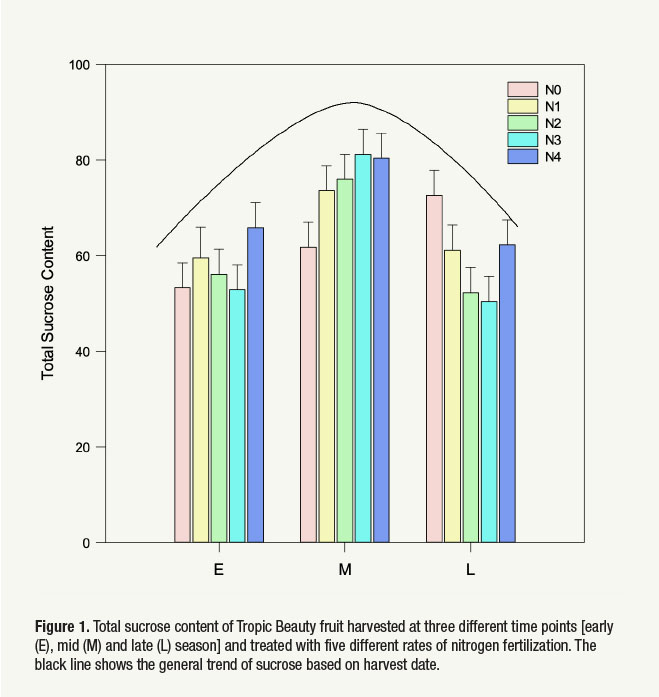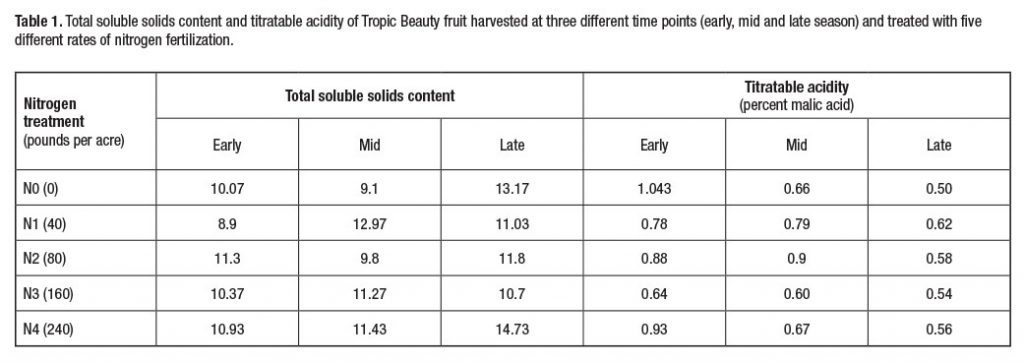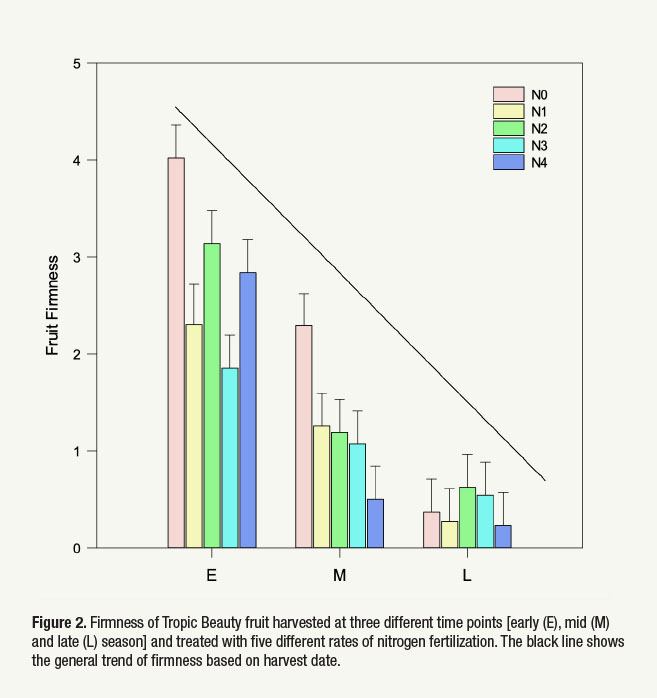
By Tripti Vashisth
Peach production in subtropical environments has increased significantly in the last 30 years. Interest continues to grow due to two factors. First, early flowering and fruit set result in growers being able to harvest fruit earlier in the domestic market window, giving higher economic returns. Second, breeding advances have resulted in the availability of low-chill peach varieties that provide alternatives for growers seeking to diversify.
Peaches are appreciated for their great taste, flavor and aroma. Ideal peach fruit quality and high nutritive value drives consumer satisfaction measured by initial and repeat consumer purchases. In addition to excellent fruit taste, peaches are also a good source of vitamin C and have a fair amount of antioxidant activity. Mercy Olmstead conducted a consumer survey to identify peach attributes that contribute to repeated consumer purchase. According to the survey, vitamin C scored high after flavor and texture, suggesting consumers prefer high-nutrient value in peaches.
As consumers learn about the health benefits of fruits, they are demanding fruit with high health-benefitting compounds (phytochemicals imparting antioxidant capacity) in addition to great flavor and quality. Increased consumption of fruits has been associated with potential protection against age-related diseases.
Production of subtropical peach varieties requires alterations in cultural practices, as the active growth period is considerably longer than in temperate production areas. It has been suggested that these practices may influence overall fruit quality and health-benefitting compound concentrations in fruits. Overall fruit quality, distribution and composition of phenolic phytochemicals are affected by maturity, cultivars, fertilization, growing season and post-harvest storage conditions. Therefore, a study was conducted to evaluate the effect of nitrogen fertilization and harvest date on quality and health-benefitting compounds, antioxidants and polyphenolic compounds of the low-chill peach cultivar Tropic Beauty.
STUDY SETUP
Tropic Beauty trees were treated with one of five rates of nitrogen (N) treatment. The rates of N were: 0 (N0), 40 (N1), 80 (N2), 160 (N3) and 240 (N4) pounds per acre per year annually for three years. The fertilizer was applied through the irrigation system and was divided into 12 applications per year.
The trees were pruned, irrigated and fruit-thinned according to standard industry practices to minimize the cultural practice component. All the fruit meeting commercially accepted standards for ground color and fruit size were harvested by trained harvesters. Harvests occurred on May 22, June 2 and June 12, 2014, representing early, mid and late harvests respectively.
RESEARCH RESULTS

Both nitrogen fertilization and harvest date were found to affect different fruit-quality parameters such as glucose, fructose, sucrose, titratable acidity (TA), color and texture. Both rate of nitrogen and harvest date affected health-benefitting compounds and antioxidant capacity of the peach fruit.
Interestingly, no effect of rate of fertilization alone was observed on total soluble solids (TSS), fructose, glucose or sucrose content of peach fruit. However, harvest date consistently showed an effect on sugar content of fruit. The mid harvest date, regardless of nitrogen treatment, always resulted in the highest sugar content.


Figure 1 shows sucrose content of Tropic Beauty fruit. It is interesting to note that the highest sucrose content was achieved in mid harvest, where the sucrose increased with rate of nitrogen applied. In N0 and N1 treatments, the fluctuation in sucrose content was least. An increase in TSS was observed with late harvest dates, but the TA decreased with harvest date (Table 1). The fruit that ripened early, and was therefore harvested early, was high in TA. As time passed, the TA decreased.
Similarly, a significant decrease in fruit firmness was observed for the fruit harvested late in the season. Overall, the fruit from the trees that received the highest nitrogen had the lowest firmness. However, by late harvest, all the nitrogen treatments had similar firmness (Figure 2).

Anthocyanin, a pigment that is responsible for imparting fruit color and contributes to antioxidant activity, was found to increase with late harvest date. Fruit harvested late were deep red in color as compared to fruit harvested early. However, for total phenolic, flavonoid and antioxidant content (Figure 3), a steady decrease was observed with late harvest in all the nitrogen treatments. Generally, the treatment with the highest nitrogen showed the highest concentration of phytochemical and antioxidant capacity. It is possible that excessive nitrogen application resulted in high oxidative stress on the trees. Therefore, accumulation of these phytochemicals occurred to sequester reactive oxygen species, thereby mitigating oxidative stress.
CONCLUSION
Overall, these results suggest that both fertilization and harvest period can significantly affect different parameters of fruit quality as well as the health-benefiting attributes of the fruit. Interestingly, harvest time was more influential and straightforward for various fruit traits than fertilization was. The relationship between sucrose content, TA, antioxidant property and fertilization is complex and not linear.
To obtain fruit with optimum quality and health-benefiting compounds and to avoid adverse effects of tree growth, the rate of nitrogen should be moderate (between 80 to 160 pounds per acre). Excessive nitrogen is not beneficial for good fruit quality.









